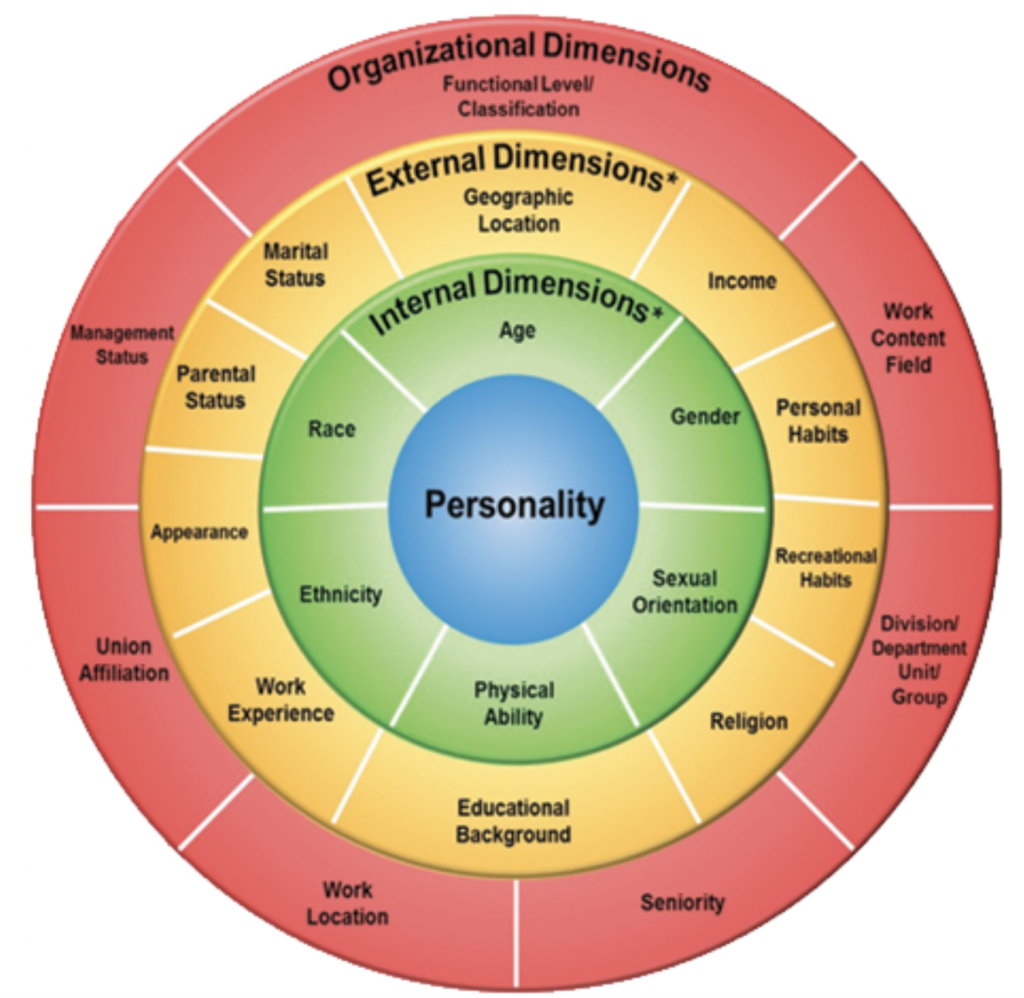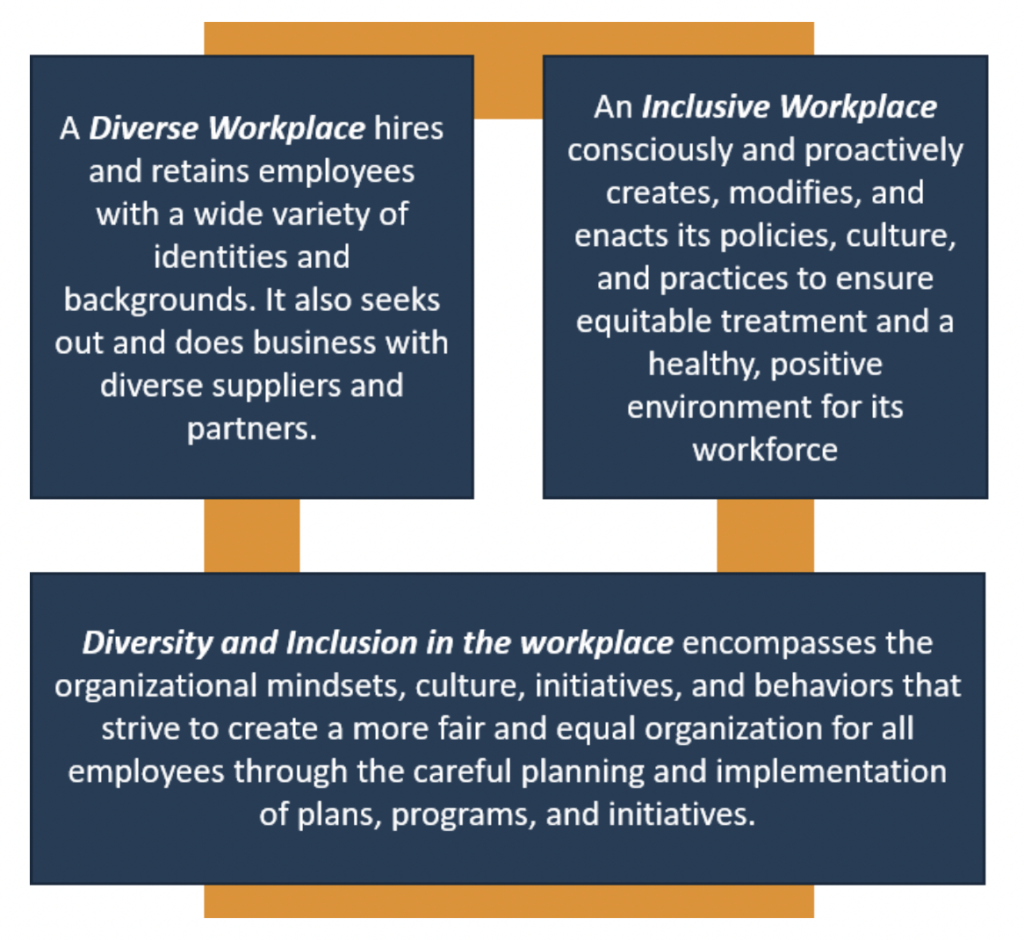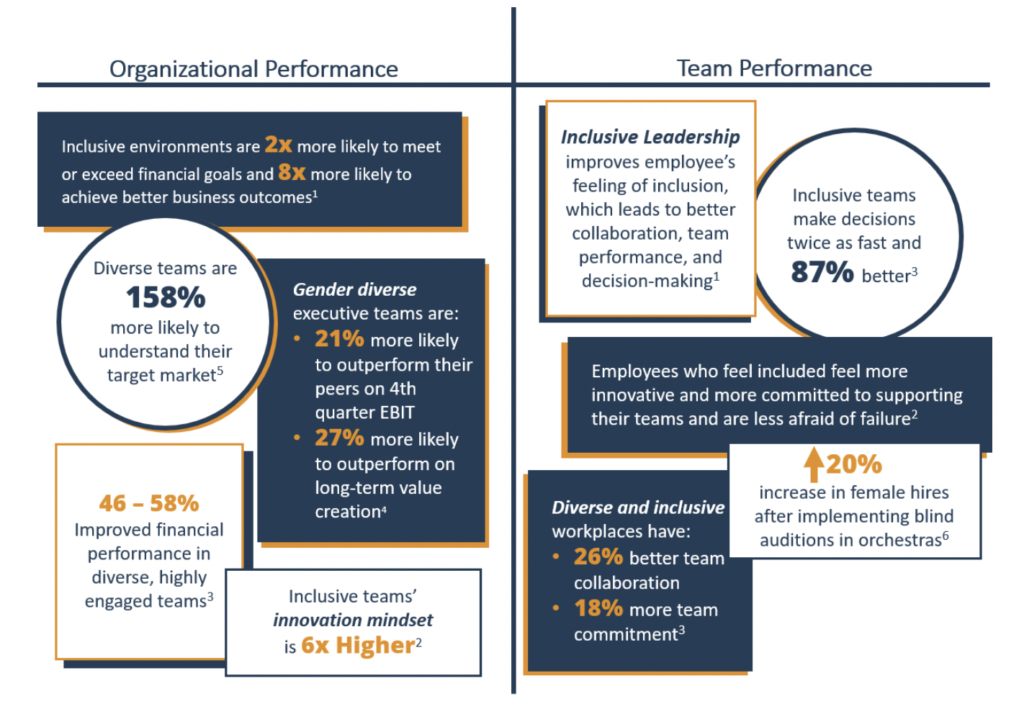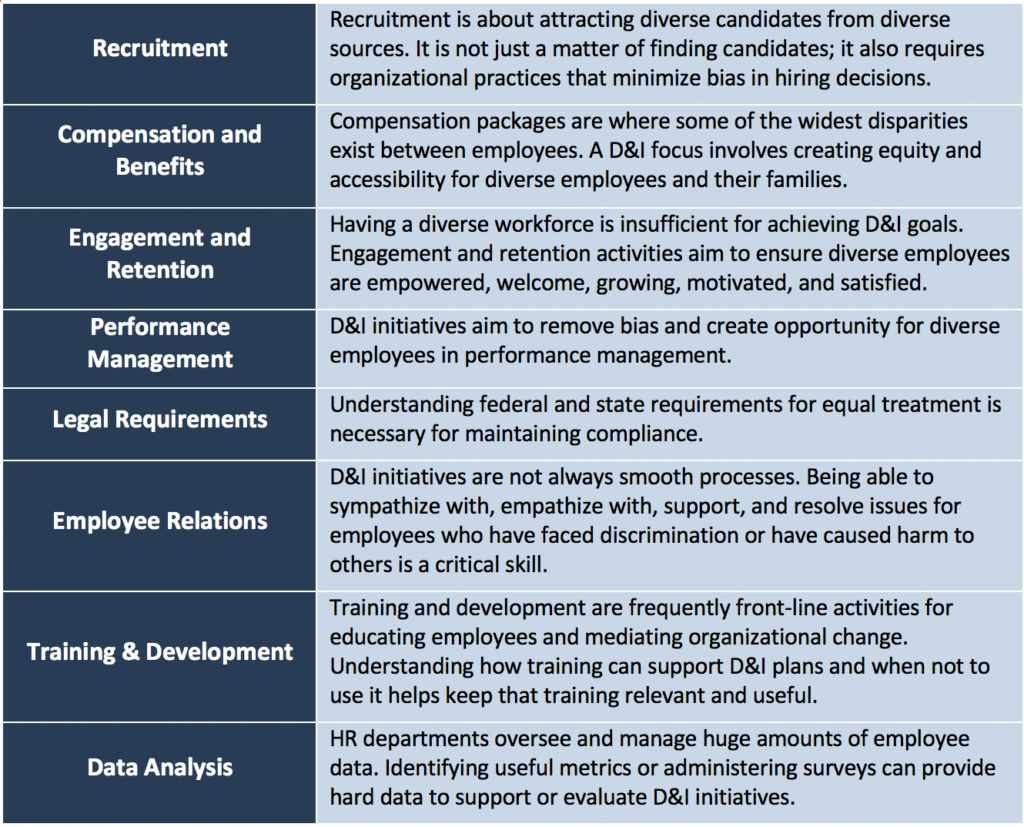Great Minds Don’t Always Think Alike- The Case for Diversity and Inclusion
June 5, 2019 in Diversity & Inclusion
By Rachel Thon, Jessica Milloy
Although it’s easy to feel like Diversity and Inclusion, or D&I, are the buzzwords of the moment, the principles beneath them actually signify a fundamental shift in how organizations build and maintain relationships with their workforce. Making space and time to focus on D&I yields lasting, tangible results for your leaders, your employees, and your bottom-line. Our truism this month is ‘Great Minds Don’t Always Think Alike’ and much like a truism should feel self-evident, the case for D&I should be obvious and fully understood. Organizations across all sectors have recognized the need for and benefits of creating workplaces that reflect the diversity of their customers and their communities. More savvy organizations take their focus beyond sheer demographics and delve into the features and factors that make their offices a safe and inclusive space for all their employees. In our blog posts this month, we’ll explore a variety of relevant and interesting topics that dig beneath buzzwords to better understand all of what organizations should consider when they start tossing the term D&I around casually. In this first blog of the month, we’ll spend some time getting more familiar with each of these terms, talk through the business case for these efforts, and briefly look at how D&I efforts fit into broader organizational activities.
First, let’s get to some shared meaning on what diversity and inclusion mean, how they work together, and are manifest in the workplace:
Diversity:At its core, diversity means the differences between people. Each one of us carries a unique combination of identities, both about who we are – our race, our gender, our religion, our economic class – and how we think. The image on the right represents many of the dimensions by which humans across the globe identify themselves and each other.
Inclusion: Where diversity describes who we are, inclusion describes how we experience the world. Inclusion reflects how well our communities or workplaces welcome, support, empower, and engage people of diverse demographic backgrounds.
Next, let’s take the concepts of diversity and inclusion and apply them to our workplaces. The graphic below describes what a diverse workplace, and inclusive workplace, and what the practice of D&I in the workplace looks like. It is important to remember that neither diversity nor inclusion are sufficient on their own – each depends on the other to drive the greatest, most impactful change.
Organizations that focus on creating a diverse and inclusive workplace are seeing results for their efforts, both tangible and intangible. Tangible results[1]are the measurable impacts of D&I work – these are metrics and other quantifiable data that directly reflect the impact of D&I initiatives. Intangible results[2]– like employee engagement or innovation – cannot be directly measured. Instead, intangible results are analyzed by identifying relevant metrics and/or collecting qualitative data from surveys or focus groups.
The results of D&I initiatives show up in two main places: organizational performance and team performance. The graphic below highlights some key pieces of data that have been identified during studies of and reports from organizations across the globe:
These are not small results- from the tangible impacts on revenue and retention, to the increases in engagement and reputation, improvements in these areas have significant impact on an organization’s performance. And, like most things in life, getting to results is about hard work, not quick-fixes or check-the-box exercises. To achieve these results and create a diverse and inclusive workplace requires a comprehensive, complex understanding of all the contributing factors. While the impacts of D&I are felt throughout the organization, Human Resources (HR) is the primary driver of many D&I-focused initiatives, which makes sense given its focus on the employee experience. The following table highlights how a focus on D&I spans across the entire employee experience, organized around primary HR responsibilities:
Getting D&I right takes hard work, dedication, and integration across organizational activities, but it also results in significant impact. A lot of fascinating research and work is being done within this field and we’ll spend the rest of this month exploring the more interesting and complex topics that build off of this introduction.
If your organization could use some support in reviewing and enhancing your diversity and inclusion-related practices, please let us know!
D&I Results Sources (pictured in graphic):
- Deloitte, 2018
- Accenture, 2019
- International Customer Management Institute, 2018
- McKinsey & Company, 2018
- Center for Talent Innovation, 2013
- Boston Consulting Group, 2018
[1]Source: Juliet Bourke, Which Two Heads Are Better Than One? How Diverse Teams Create Breakthrough Ideas and Make Smarter Decisions(Australian Institute of Company Directors, 2016).
[2]Source: Based on Deloitte Australia’s analysis of 105 leaders as assessed by 600 raters against the six signature traits of inclusive leadership and perceived performance outcomes.



